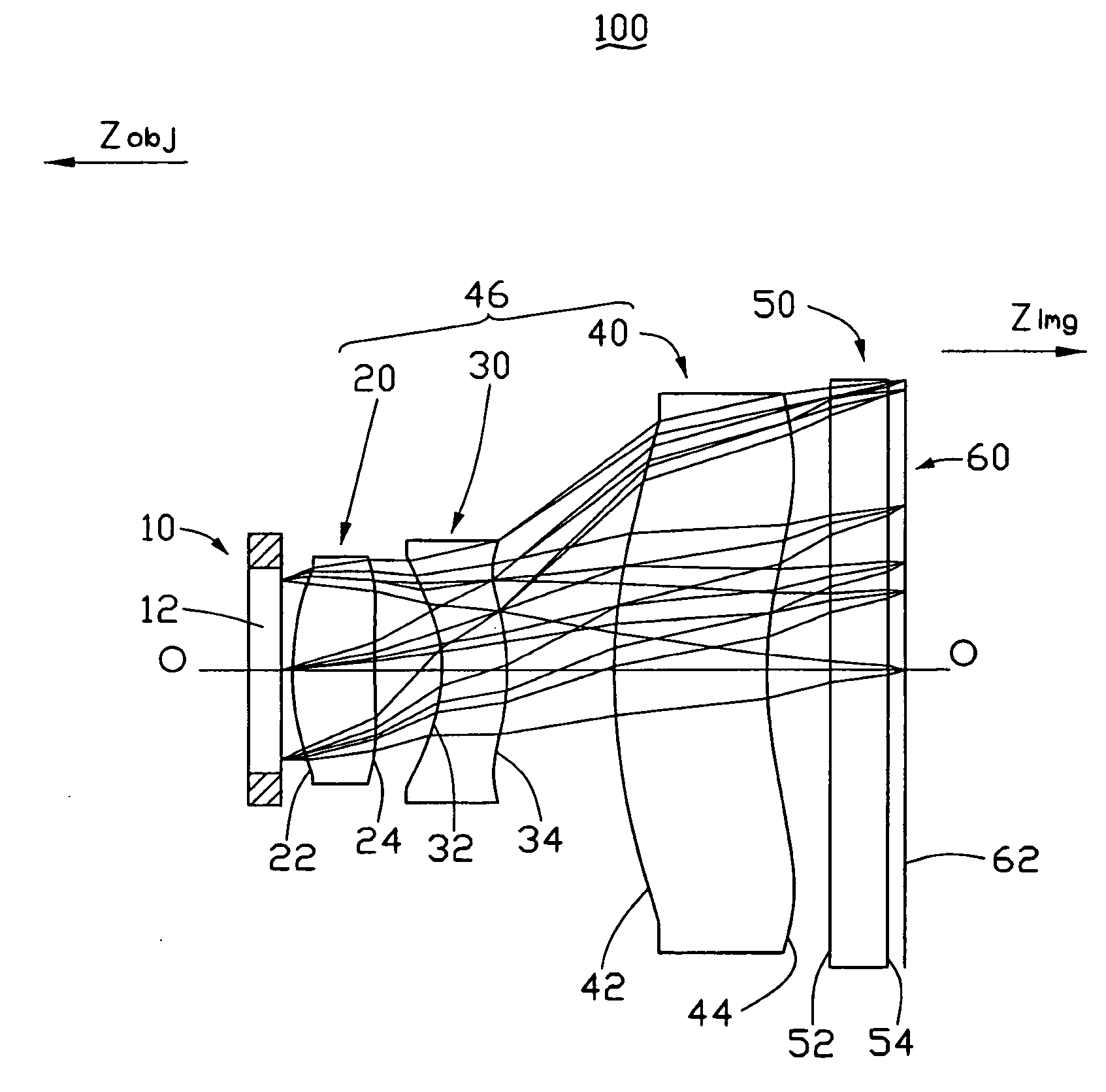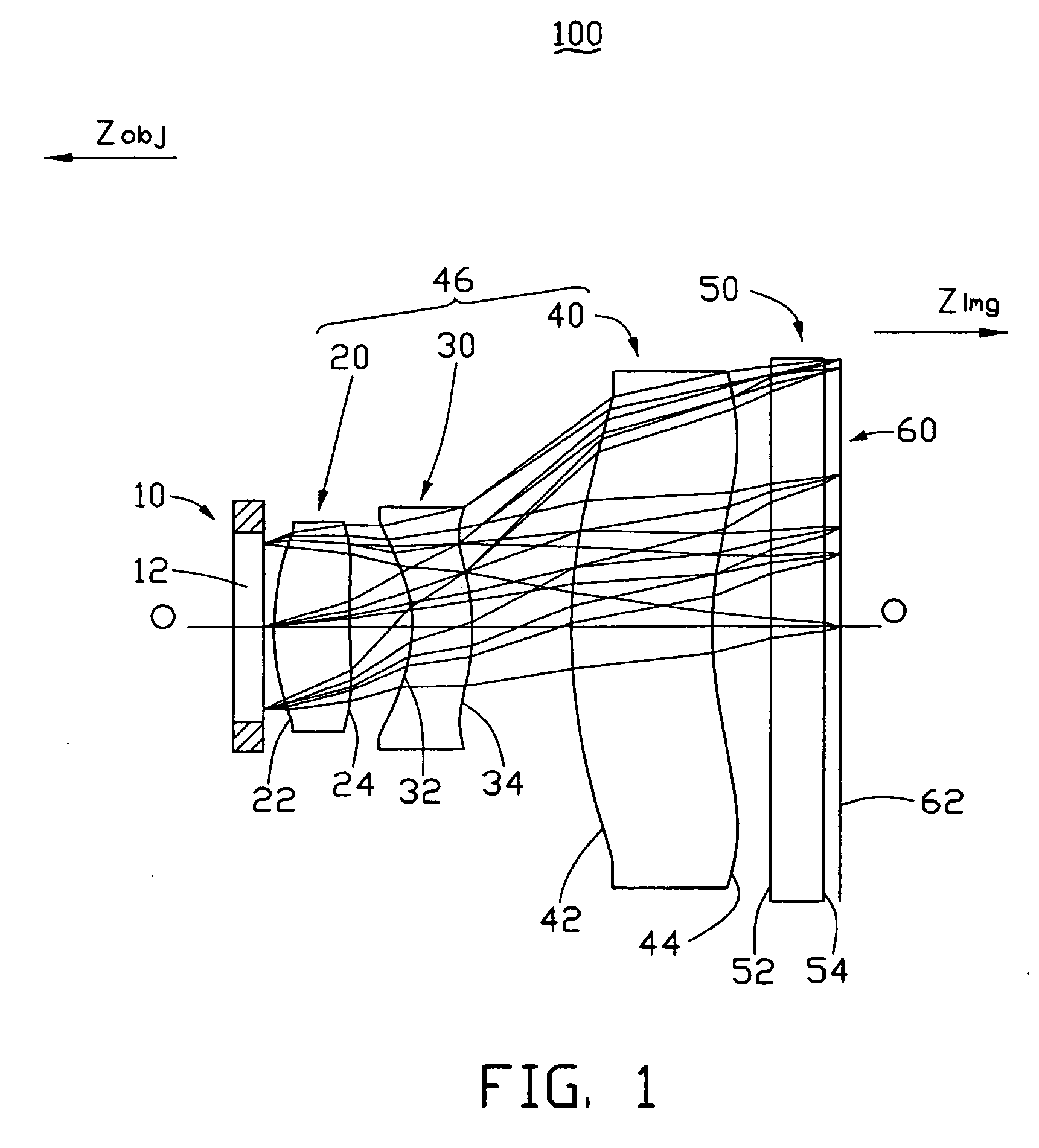Lens system for digital camera
a digital camera and lens system technology, applied in the field of lenses, can solve the problems of increased manufacturing cost, large number of lens elements, heavy weight, etc., and achieve the effect of reducing the cost of assembling and mounting the lens elements, increasing the manufacturing cost, and increasing the manufacturing cos
- Summary
- Abstract
- Description
- Claims
- Application Information
AI Technical Summary
Benefits of technology
Problems solved by technology
Method used
Image
Examples
Embodiment Construction
[0017] Referring to FIG. 1, an optical module 100 of a digital camera of a preferred embodiment includes an aperture stop 10, a first lens element 20, a second lens element 30, a third lens element 40, an optical board 50, and an imaging sensor 60, which are arranged in that order from an object side designated as “Zobj” to an image side designated as “Zimg”. The first lens element 20, the second lens element 30, and the third lens element 40 together may be considered, as a group, to constitute a lens system 46 of the optical module 100. Line OO represents an optical axis of the lens system.
[0018] The aperture stop 10 includes a stop plane 12, which faces the first lens element 20. The aperture stop 10 is the first component to receive light rays when the optical module 100 is used. Therefore, the light rays can easily be controlled using the aperture stop 10.
[0019] The first lens element 20 is biconvex and aspheric. The first lens element 20 includes a first aspheric surface 22 ...
PUM
 Login to View More
Login to View More Abstract
Description
Claims
Application Information
 Login to View More
Login to View More - R&D
- Intellectual Property
- Life Sciences
- Materials
- Tech Scout
- Unparalleled Data Quality
- Higher Quality Content
- 60% Fewer Hallucinations
Browse by: Latest US Patents, China's latest patents, Technical Efficacy Thesaurus, Application Domain, Technology Topic, Popular Technical Reports.
© 2025 PatSnap. All rights reserved.Legal|Privacy policy|Modern Slavery Act Transparency Statement|Sitemap|About US| Contact US: help@patsnap.com



